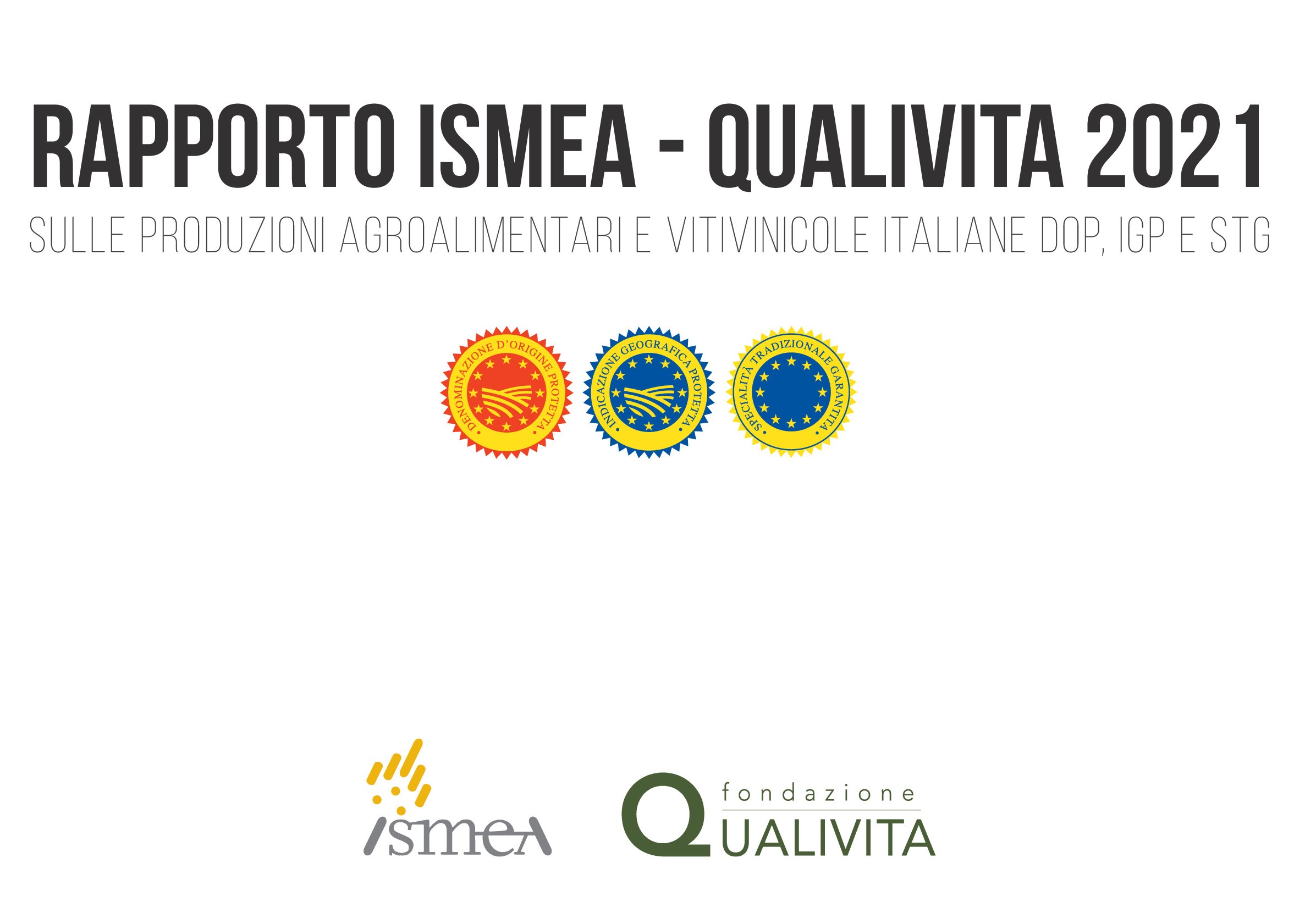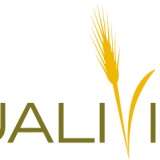
 Fondazione Qualivita
Fondazione Qualivita
Italian report: Ismea - Qualivita report 2021 on Italian food and wine productions DOP, IGP and STG
- WTI Magazine #148 Feb 19, 2022
-

 Fondazione Qualivita
Fondazione Qualivita
It was not obvious, but the 19th Ismea-Qualivita Report confirms it: the PDO (Protected Designation of Origin) economy played a crucial role in the Italian agricultural and food districts even in the year of the pandemic. The numbers certify this, with the economic value of production holding steady at 16.6 billion euros and, above all, with exports that, even though faced with changed and more complex scenarios in the destination markets, consolidate the good results of the pre-Covid period, reaching 9.5 billion euros.
There is no lack of elements confirming a strong dynamism of the GI (Geographical Indication) system, including the emergence of categories that were once "minor", such as pasta or bakery and pastry products, or the increase in economic impact in the regions of the "South and Islands" area, where the overall value of the PDO PGI (Protected Geographical Indication) supply chains marked a 7.5% increase in 2020 compared to the previous year.
It is important to emphasize that these results are also the result of support from institutions. Since the outbreak of the pandemic, the Consortia have carried out a strong representative action as spokesman of the production system, finding the support of both the Government and the Ministry of Agricultural Policies, which have recognized the Italian PDO PGI a strategic value of the first plan. In particular, to cope with the closure of the HORECA (hotellerie-restaurant-catering) channel, the Government has intervened promptly since the beginning of the pandemic through the approval of urgent measures specific to GIs, with positive effects that have given prompt support to companies in the sector.
THE SCENARIO OF CHANGE
The pandemic has accelerated the repositioning of many productive sectors that, also through the thrust of new national and European policies, have started a process of change. A deeper understanding of the climate and environmental crisis has shaken the conscience of society as a whole, which is now made up of consumers who are more careful about what they buy and companies that are more aware of what they produce. A search for quality and wellbeing (sometimes only apparent) seems to be guiding the new global economy today in all sectors, to facilitate a necessary corrective action on environmental issues and, in particular, on climate issues related to rising temperatures.
THE GREEN DEAL AND REGULATORY CHANGES
In this scenario of great transformation, the system of Geographical Indications is also called to face important regulatory changes contained within the strategies of the European Green Deal package.
The overall review of the GI system, which has come to life with the public consultation launched by the European Commission in 2021 aimed at collecting the opinions of all stakeholders and defining the priorities to be pursued with the new Regulation on PDOs and PGIs, takes into consideration decisive aspects for the future of Geographical Indications, such as the strengthening of protection and the definition of new powers of groups of operators, which represent crucial steps for the recognition of a strong role of the Consortia for the protection of the supply chain and management of designations. The new European CAP (Common Agricultural Policy) 2023-2027 deals, among other things, with the revision of the discipline of wines within the Common Market Organization and the implementation of National Strategic Plans aligned with the new eco-sustainable objectives.
FROM DEVELOPMENT TO PROGRESS OF THE ITALIAN FOOD SYSTEM
In this "new world", where players are forced to change, the winner will be the one who will be able to respond before others, in an authentic way, to the new food needs and, consequently, who will be able to produce in a different way, as the planet demands. With regard to the concept of "progress of production systems", Geographical Indications have traced a path and, over the years, have been able to organize a reflection on the territory, involving not only producers and operators of the supply chain. The GI way to progress is the most important one that Italy has been able to realize, able to unite companies, Consortia, institutions and many other actors of the territory in a path of growth. If, therefore, the growth of the phenomenon of Italian GIs certified in all these years by the data of the Ismea-Qualivita Report, both in terms of EU registrations and economic values, we cannot help but go beyond these numbers and emphasize the qualitative aspects of a system that, on the one hand, cannot grow indefinitely, but, on the other, can represent the reference model for the "agri-food progress of the country".
Production plans, consumer information campaigns, the search for more sustainable production criteria, the tools for distributing value throughout the supply chain are just a few examples of how the Consorzi di tutela have succeeded in declining forms of food progress in Italy. An uncommon attitude and rarely shared by other production sectors. If we want to maintain the world leadership of "good food", the one that has allowed us to be great exporters and, above all, to consolidate the image and reputation of the "Bel Paese", we must certainly put in place new policies to strengthen the value and role of the GI system.
Mauro Rosati - Director General of Fondazione Qualivita
Abstract Report 2021
2020 has been the year marked by the pandemic, which has challenged many factors underlying the systems of production, distribution and consumption for almost all sectors. In this scenario, the agri-food sector as a whole has shown a good resilience and the PDO economy, in particular, has confirmed the strategic role played in the territories, thanks to the work done by companies and consortia with solidarity actions, direct support activities, dialogue with institutions and market players to ensure as much as possible a continuity of production chains. A high degree of resilience of a complex and organized system, involving 200 thousand operators and 286 Consortia authorized by the Ministry of Agricultural Policies.
In economic terms, the total value of certified PDO and PGI food and wine production in 2020 is 16.6 billion euros, with a -2.0% on an annual basis, a figure that confirms the contribution of 19% to the total turnover of the national food sector.
At the level of territorial impacts of the supply chains it is interesting to note the data by areas: if the four regions of the North-East are confirmed as the driving force representing more than half of the total national value of the PDO PGI sector (53%), only the area "South and Islands" shows an overall increase in value in 2020 compared to the previous year (+7.5%). It is also confirmed the most important fact that specifically characterizes the sector: all Italian regions and provinces have an economic impact due to the supply chains of PDO PGI products, which express a heritage of the territories by their nature not relocatable.
Regarding the export of PDO and PGI food and wine, 2020 records a stable value compared to the previous year, reaching 9.5 billion euros for a weight of 20% in the Italian food exports. The result is the result of a different trend between the two sectors, with Food that with 3.92 billion euros records an increase in export value of +1.6% and Wine that with 5.57 billion euros shows a decrease of -1.3%.
In the domestic market, the effects of the pandemic drove growth in consumption in the large-scale retail sector and in this scenario food sales of GI products performed better than their conventional counterparts. Considering only sales by fixed weight in the large-scale retail trade (large-scale organized distribution), in 2020 the growth in value for PDO PGI food and wine products was +9.7% and it is interesting to note that, even after this leap, the first nine months of 2021 confirm important results, even with a further growth of +1.7%. Finally, the link between the PDO PGI sector and the food industry and craftsmanship is consolidating: in 2020 68% of the Consortia granted the authorization to use the PGI as an ingredient for processed products and overall there were about 13,000 authorizations issued over the years, for an estimated turnover of 260 million euros of PDO PGI production value for processed products.